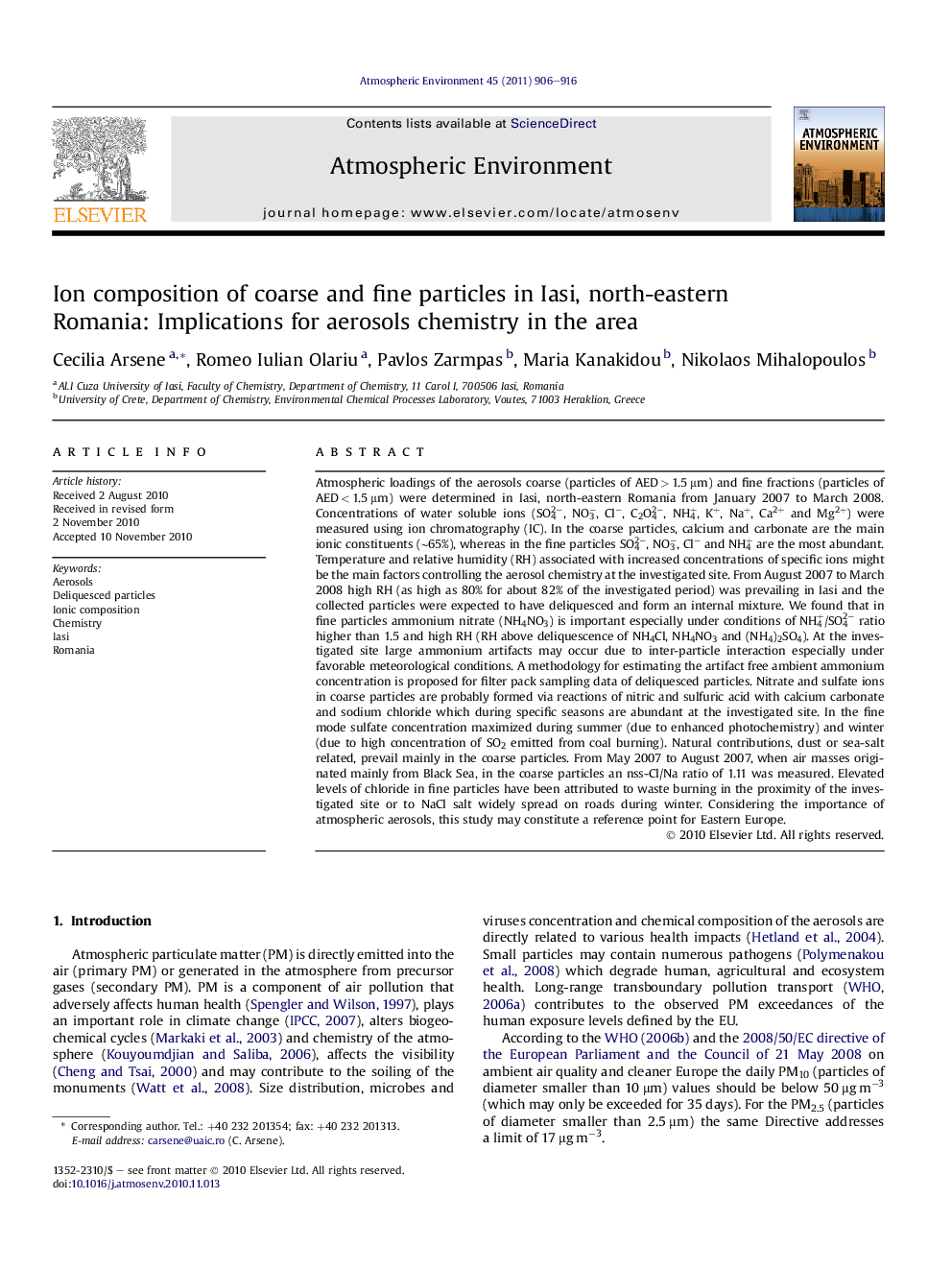| Article ID | Journal | Published Year | Pages | File Type |
|---|---|---|---|---|
| 4440243 | Atmospheric Environment | 2011 | 11 Pages |
Atmospheric loadings of the aerosols coarse (particles of AED > 1.5 μm) and fine fractions (particles of AED < 1.5 μm) were determined in Iasi, north-eastern Romania from January 2007 to March 2008. Concentrations of water soluble ions (SO42−, NO3−, Cl−, C2O42−, NH4+, K+, Na+, Ca2+ and Mg2+) were measured using ion chromatography (IC). In the coarse particles, calcium and carbonate are the main ionic constituents (∼65%), whereas in the fine particles SO42−, NO3−, Cl− and NH4+ are the most abundant. Temperature and relative humidity (RH) associated with increased concentrations of specific ions might be the main factors controlling the aerosol chemistry at the investigated site. From August 2007 to March 2008 high RH (as high as 80% for about 82% of the investigated period) was prevailing in Iasi and the collected particles were expected to have deliquesced and form an internal mixture. We found that in fine particles ammonium nitrate (NH4NO3) is important especially under conditions of NH4+/SO42− ratio higher than 1.5 and high RH (RH above deliquescence of NH4Cl, NH4NO3 and (NH4)2SO4). At the investigated site large ammonium artifacts may occur due to inter-particle interaction especially under favorable meteorological conditions. A methodology for estimating the artifact free ambient ammonium concentration is proposed for filter pack sampling data of deliquesced particles. Nitrate and sulfate ions in coarse particles are probably formed via reactions of nitric and sulfuric acid with calcium carbonate and sodium chloride which during specific seasons are abundant at the investigated site. In the fine mode sulfate concentration maximized during summer (due to enhanced photochemistry) and winter (due to high concentration of SO2 emitted from coal burning). Natural contributions, dust or sea-salt related, prevail mainly in the coarse particles. From May 2007 to August 2007, when air masses originated mainly from Black Sea, in the coarse particles an nss-Cl/Na ratio of 1.11 was measured. Elevated levels of chloride in fine particles have been attributed to waste burning in the proximity of the investigated site or to NaCl salt widely spread on roads during winter. Considering the importance of atmospheric aerosols, this study may constitute a reference point for Eastern Europe.
Research highlights► Reference point in atmospheric aerosols measurements for Eastern Europe. ► First measurements on variation of the aerosols ionic composition at Iasi, Romania. ► Complex aerosol chemistry in the area (derived by the composition and meteorology). ► Artifact free ambient ammonium estimated in a deliquesced particles environment. ► Anthropogenic tracers in the fine fraction; natural ones in the coarse fraction.
